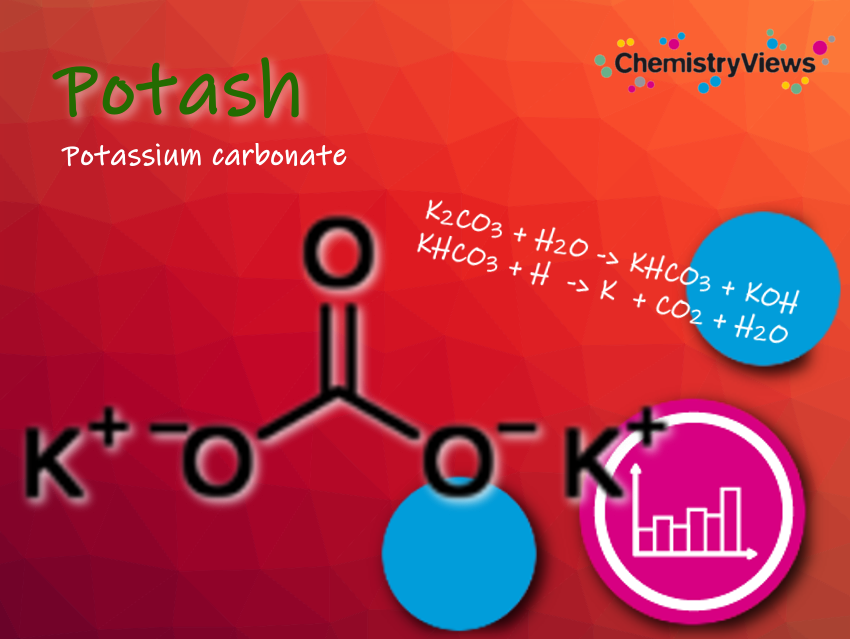Potash or pearlash is an older name for potassium carbonate (K2CO3), a colorless, odorless crystalline substance. Like baking powder, potash can release carbon dioxide to loosen dough. However, it makes the dough rise less in height than it spreads out, so it is used for flat pastries and heavy doughs with nuts, honey, and fruits. It is a traditional baking ingredient for Christmas pastries and gives the pastry a weak, but typical additional flavor that we know from gingerbread.
.png)
Potash used to be obtained by leaching if from plant ash and then evaporating the liquid it in pots (hence the name). Today, potash is mainly obtained by introducing carbon dioxide into KOH: 2 KOH + CO2 → K2CO3 + H2O
Make Potash Yourself
Potash can be obtained by leaching plant ash of chemically untreated plants with pure water. Plant ash is usually wood ash from deciduous trees and conifers, which is produced when firewood is burned. Wood ash contains 14–19 % potash. In addition to wood ash, ash from bean stalks, thistles, ferns, potato weed, corn stalks, reeds, seaweed, and vines is also suitable.
For approx. 30 g potash, you need 200 g wood ash, without charcoal pieces, and 2 L of drinking water.
- Mix wood ash well with water in a pot
- Let stand for 12 hours and stir vigorously
- Filter through a coffee filter or bring briefly to the boil to increases the yield
- Boil the filtered clear liquid, stir occasionally until the water has evaporated and only a fine white powder, the potash, remains.
If potash is to be stored, it must be kept dry and sealed because it attracts moisture from the air and then liquefies.
References
- Holleman Wiberg, Lehrbuch der Anorganischen Chemie, de Gruyter, Berlin, Germany 1985.
- Frank Massholder, Was ist Pottasche, foodlexicon.org (Retrieved December 12, 2020)
Also of Interest
- Chemistry Advent Calendar 2020
ChemistryViews 2020.
Daily highlights from the chemistry of spices - Baking Powder Chemistry
ChemistryViews 2020.





Isn’t the majority of wood ashes caustic Lye though? Shouldn’t that be separated out?